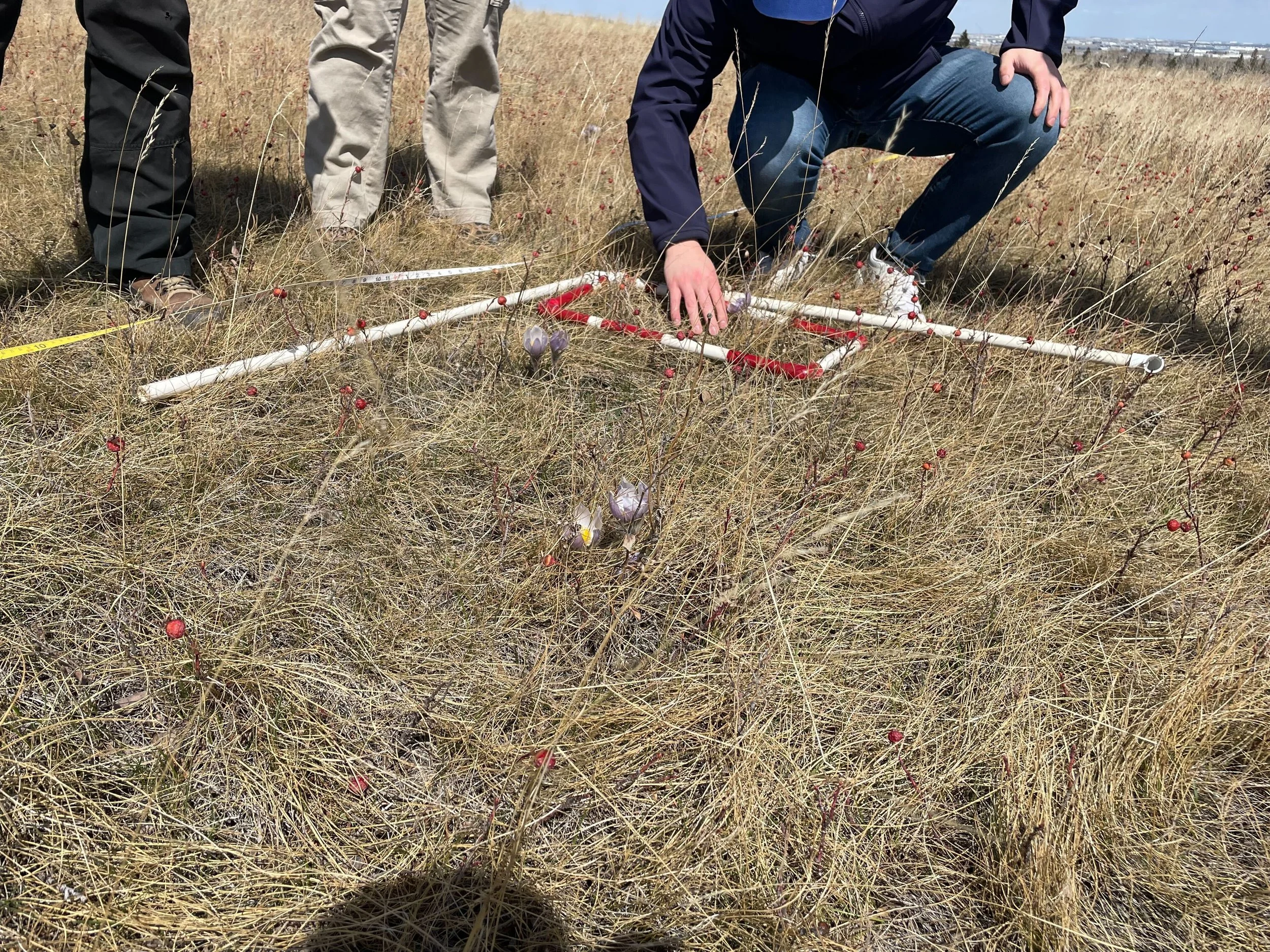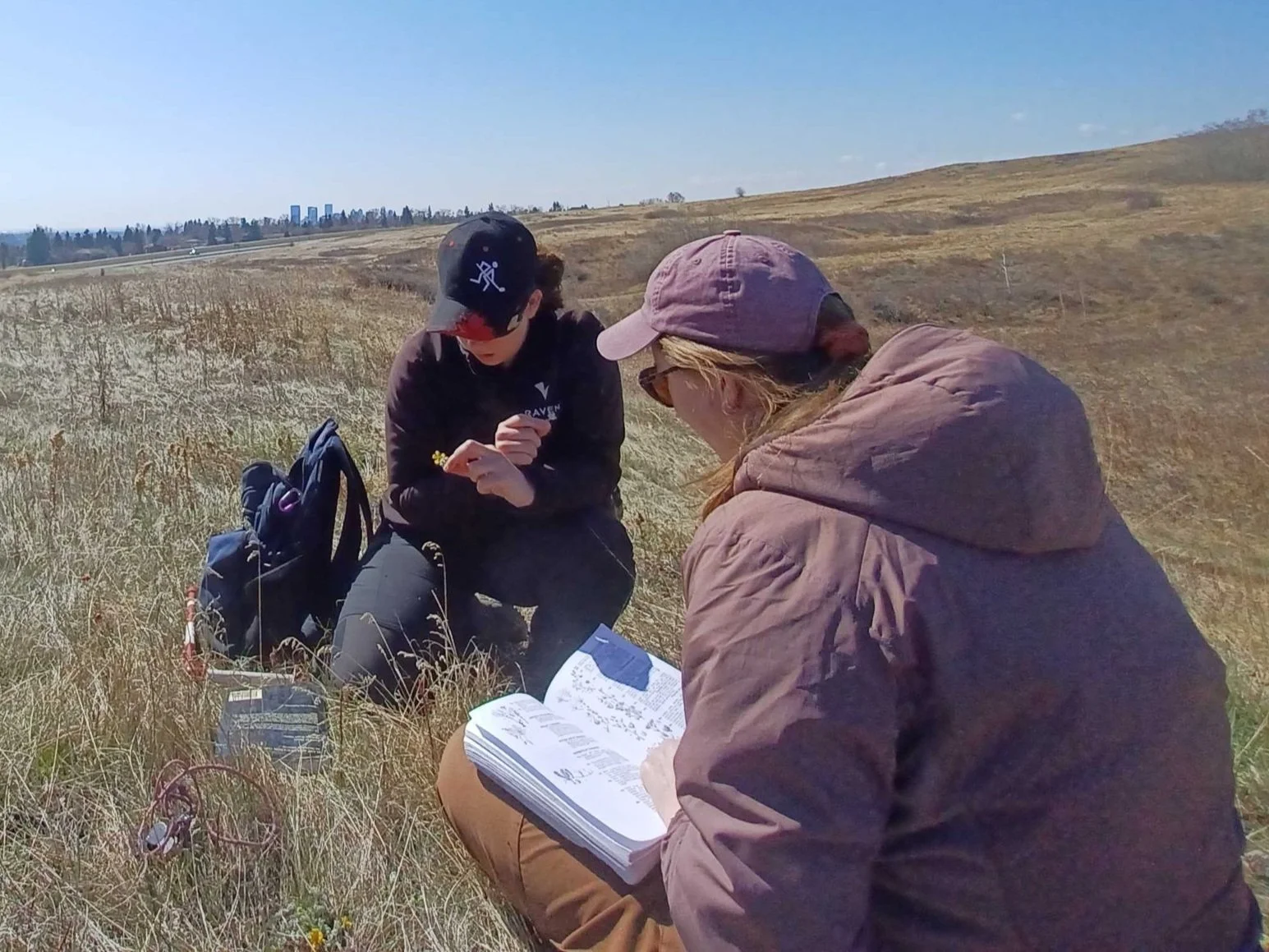Botanical Training at Nose Hill Park: Uncovering Rare Soapweed and Exploring Species Range
AJM’s vegetation team identifying plants in a study plot along a transect
AJM’s vegetation team brushed up on their botanical skills during a field training session in April at Nose Hill Park. In these photos, we’re identifying plants such as prairie rose (Rosa woodsii), kentucky bluegrass (Poa pratensis), and prairie crocus (Pulsatilla nuttalliana) in small plots along a transect. The measuring tape marks the transect line, and PVC pipes outline the study plots. They’re marked so that we can quickly estimate the percent of ground covered by each species (a 1x1 meter and Daubenmire plot were used, for the methodology nerds among us). We’ll apply methods like these throughout the growing season in a variety of vegetation projects, including monitoring plant community health in boreal wetlands and determining the habitat type and suitability for grazing of rangelands.
In addition to favourite signs of spring in Alberta like prairie crocus and early cinquefoil (Potentilla concinna), we came across an interesting discovery: what appeared to be soapweed (Yucca glauca), a species federally listed under the Species at Risk Act (SARA) and normally found far to the south of Calgary. Upon further investigation through iNaturalist – an app and website where anyone can document and identify living things they observe in the wild – a handful of soapweed plants are growing in Nose Hill Park and local observers suspect that they were planted there, as the nearest known population is at least 200 km away and there are no historic records of soapweed in the area.
prairie crocus (Pulsatilla nuttalliana) soapweed (Yucca glauca)
In Alberta, soapweed naturally occurs in only two known locations in the Milk River drainage, which is as far north as suitable growing conditions are typically found. The species’ range extends as far south as Texas. However, it is also sometimes cultivated as an ornamental plant through clonal propagation. It has a highly specialized, mutualistic relationship with the yucca moth (Tegeticula yuccasella), which is also a federally listed species and the only native yucca moth in Alberta. The month of May is essential for the pollination of soapweed, making their coexistence critical for the survival of both species. If the soapweed plants in Nose Hill Park were planted there, the yucca moth is likely not present, meaning that the population could only grow by clonal reproduction, not by setting seed.
AJMers observing plants found in Nose Hill Park in Calgary, AB
Biologists report naturally occurring rare plants like soapweed to the Alberta Conservation Information Management System. Citizen science applications like iNaturalist also have valuable a role to play in documenting rare species. As more observations of soapweed are added to iNaturalist, especially pictures of flowers and seed pods, we can learn more about this species and whether it and its pollinator could persist further north than their historic range – a question that is increasingly important as the climate changes.
Written By: Laura Southcott, AJM Environmental Biologist




